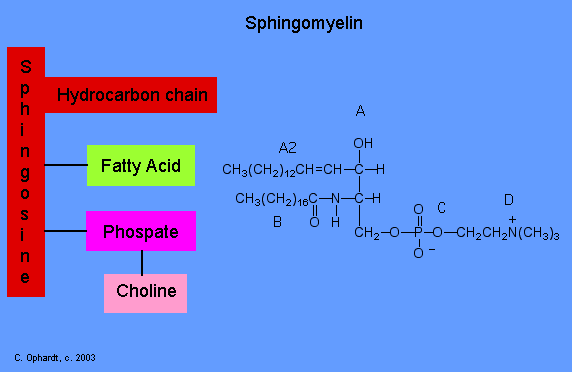What are lipids?
1 Answer
Lipids are naturally-occurring organic compounds that are readily soluble in nonpolar solvents but insoluble in polar solvents.
Explanation:
The main biological functions of lipids include storing energy, signalling, and acting as structural components of cell membranes.
Since lipids are defined by their solubilities, they have varying structures, but they all have one thing in common: a polar, hydrophilic "head" and a nonpolar, hydrophobic, hydrocarbon "tail".
Lipids include the following classes.
Fats
Fats are esters of glycerol with long-chain fatty acids.

The ester groups form the polar head of the molecule.
Phospholipids
In phospholipids, one of the fatty acids has been replaced by a phosphate group and a simple molecule such as choline.

Sphingolipids
Sphingolipids are based on sphingosine rather than glycerol. Sphingomyelin is a typical example.

Sterols
Sterols have a tetracyclic hydrocarbon ring system with an attached hydrocarbon chain. Cholesterol is a typical example.

Fat-Soluble Vitamins
Vitamin A (retinol) is a typical example.

The OH group is the polar head of the molecule.

